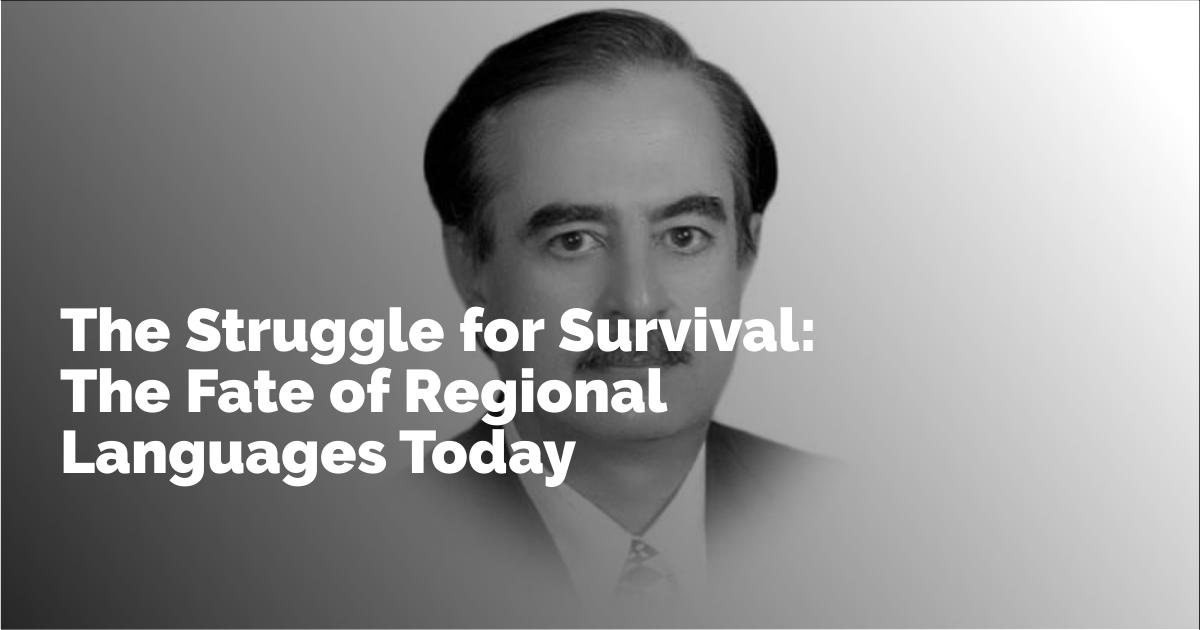Are Regional Languages Slowly Becoming Extinct?
The question of whether regional languages are gradually becoming extinct is more complex than it might first appear. While languages like Pashto are spoken by millions as their mother tongue, there are deeper layers to consider when assessing the vitality and sustainability of a language. This involves exploring the language's presence in education, its political support, its role in business, administration, law, and state policy, as well as its body of literature and grammar.
The State of Regional Languages
A language comprises not just the spoken word but also a rich tapestry including written works, grammar, literature, history, syntax, and idioms. For Pashto, although it remains vibrantly spoken, its written and academic forms are under threat from predominant languages like Urdu and English. These languages not only dominate in everyday use but also heavily influence state policies, especially in educational contexts, thereby pushing regional languages to the periphery.
Cultural Identity and Language
David Crystal, in his book "Language Death", emphasizes the cultural implications and loss of identity that accompany the extinction of regional languages. According to him, only about 600 of the world's estimated 6,500 languages can be considered "safe" from extinction. The gradual disappearance of languages reflects a cultural and historical loss that may, over time, reduce the world to a few dominant languages with the consequential erosion of cultural diversity.
Language Death: A Global Concern
The concept of language death refers to the cessation of a language being spoken. Though records or written archives might preserve some aspects, a language is considered dead if it no longer has fluent speakers. Even languages with millions of speakers, such as Pashto, are at risk if state and societal systems continue to favor dominant languages over regional ones.
Indigenous languages face challenges due to uneven global distribution and lack of support. In many parts of the world, languages are either not recorded or supported by state policies, leading to their gradual decline. It is estimated that half of the world's languages could vanish in the next century.
Classifying Language Threats
Michael Krauss offers classifications for the risk levels faced by indigenous languages: safe, endangered, extinct, and moribund. A moribund language lacks the intergenerational transfer necessary for its survival, often due to a lack of formal education in the language. For Pashto and others, although they are not moribund, they struggle against systemic barriers that marginalize them in favor of national languages like Urdu and English.
Pashto: An Endangered Yet Surviving Language
Pashto is spoken by nearly 65 million people, yet it is threatened by the dominance of Urdu and English in Pakistan's educational and political systems. The language's survival depends on the state's willingness to bolster its educational use and promote its role in various societal domains. Without these interventions, Pashto risks becoming a colloquial language, restricted to emotional and informal contexts rather than serving as a robust medium for serious discourse.
Steps Toward Language Revival
Revival strategies for endangered languages involve several key steps:
- Incorporating the language as a compulsory subject in primary and secondary education is crucial. This includes developing educational materials and investing in teacher training to ensure quality learning experiences.
- Enhancing the prestige of a language requires increasing its presence in media and community settings. This visibility can extend to business, law, and administration, supported by public endorsements of indigenous names and signage.
- Economic empowerment of language speakers relative to dominant communities can play a significant role, as seen with Romansch speakers in Switzerland whose economic upliftment through tourism has aided language preservation.
- Legitimate power and recognition from dominant communities are vital. Legal frameworks, like the 1992 EU Charter for Regional or Minority Languages, can oblige countries to protect regional languages in vital public sectors.
Ultimately, the vitality of a language is deeply tied to its ability to thrive in speech and writing within its community. Understanding a language's history, folklore, and literature can serve as both a psychological reassurance and a cultural anchor for its speakers. Engaging communities and governments alike in these endeavors is essential to reversing the trend of language extinction.
출처 : Original Source

